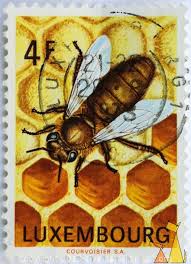Most studies that have shown negative sublethal effects of the pesticide imidacloprid on honeybees concern behavioral effects; only a few concern physiological effects. Therefore, we investigated sublethal effects of imidacloprid on the development of the hypopharyngeal glands (HPGs) and respiratory rhythm in honeybees fed under laboratory conditions. We introduced newly emerged honeybees into wooden mesh-sided cages and provided sugar solution and pollen pastry ad libitum. Imidacloprid was administered in the food: 2 μg/kg in the sugar solution and 3 μg/kg in the pollen pastry. The acini, the lobes of the HPGs of imidacloprid-treated honeybees, were 14.5 % smaller in diameter in 9-day-old honeybees and 16.3 % smaller in 14-day-old honeybees than in the same-aged untreated honeybees; the difference was significant for both age groups. Imidacloprid also significantly affected the bursting pattern of abdominal ventilation movements (AVM) by causing a 59.4 % increase in the inter-burst interval and a 56.99 % decrease in the mean duration of AVM bursts. At the same time, the quantity of food consumed (sugar solution and pollen pastry) per honeybee per day was the same for both treated and untreated honeybees.
Source:
Fani HATJINA et al (2013) Apidologie 44:467–480 (attached)

- Log in to post comments
